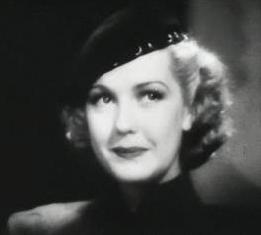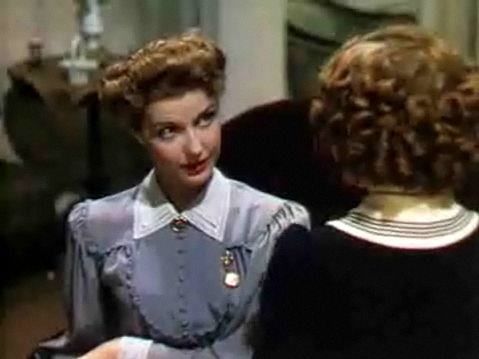1. Overview
Anita Louise (born Anita Louise Fremault; January 9, 1915 - April 25, 1970) was a prominent American film and television actress whose career spanned nearly five decades, beginning as a child actress in the silent film era. Renowned for her delicate features, blonde hair, and enduring youthful grace, she was frequently celebrated as one of cinema's most fashionable and stylish women. Louise rose to fame during the Golden Age of Hollywood, featuring in notable films such as A Midsummer Night's Dream (1935), The Story of Louis Pasteur (1935), Anthony Adverse (1936), Marie Antoinette (1938), and The Little Princess (1939). Beyond her acting prowess, she gained considerable public recognition as a Hollywood society hostess, with her gatherings widely reported in the media. Later in her career, she transitioned successfully to television, continuing to appear in various productions until her death in 1970. Her contributions to the film industry are commemorated with a star on the Hollywood Walk of Fame.
2. Life and Career
Anita Louise's life and career were marked by an early start in acting, a rise to prominence in Hollywood, and a successful transition into television.
2.1. Early Life and Education
Born Anita Louise Fremault on January 9, 1915, in New York City, she was the daughter of Louis and Ann Fremault. She received her education at the Professional Children's School. Louise began her acting career at a remarkably young age, making her Broadway debut at seven in the play Peter Ibbetson. Her first film appearance was in the 1922 production Down to the Sea in Ships, though uncredited. She received her first credited screen role at the age of nine in the 1924 film The Sixth Commandment. In 1929, she chose to drop her surname, billing herself solely by her first and middle names.
During her childhood, at the age of nine, an alarming incident occurred when she was nearly abducted. As quoted in a 1937 St. Louis Star-Times interview, Louise recounted that while leaving the Bristol Hotel in Vienna, a man seized her and attempted to pull her into a waiting automobile. Two hotel staff members intervened, rescuing her. The hotel manager subsequently warned her mother that around thirty children had reportedly been kidnapped and taken across the Italian frontier, where they were sold, some to later become victims of white slavery when they reached adulthood.
2.2. Early Career and Rise to Fame
As her presence in Hollywood grew, Anita Louise earned the esteemed designation of a WAMPAS Baby Star, a group of young actresses selected for their potential for stardom. Her public profile was further elevated by her prominent role as a Hollywood society hostess. Her lavish parties became well-known events, frequented by the elite of the entertainment industry, and were regularly and widely covered in news media, solidifying her status within Hollywood's social circles.

2.3. Film Career
Anita Louise achieved notable successes in a series of films during the 1930s. Among her major film appearances were Madame Du Barry (1934), A Midsummer Night's Dream (1935), The Story of Louis Pasteur (1935), Anthony Adverse (1936), Marie Antoinette (1938), The Sisters (1938), and The Little Princess (1939).
By the 1940s, the trajectory of her film career began to shift, with her roles increasingly limited to secondary characters. During this period, she appeared in films such as Casanova Brown (1944), Nine Girls (1944), The Bandit of Sherwood Forest (1946), Blondie's Big Moment (1947), and Bulldog Drummond at Bay (1947). Her final appearance in a motion picture was in the 1952 war film Retreat, Hell!.
2.4. Television Career
Following the decline of her film career in the late 1940s and early 1950s, the burgeoning medium of television provided Anita Louise with new acting opportunities. She took on the role of Nell McLaughlin in the television series My Friend Flicka, appearing in 39 episodes from 1956 to 1957 alongside co-stars Johnny Washbrook, Gene Evans, and Frank Ferguson. She also served as a substitute host for The Loretta Young Show in 1953 while Loretta Young was recovering from surgery. In 1957, she hosted Theater Time on ABC-TV. Her other television hosting credits included The United States Steel Hour in 1962 and Playhouse 90 in 1957. Anita Louise's final television appearance was in a 1970 episode of Mod Squad.
3. Personal Life
Anita Louise was married twice. Her first marriage was to film producer Buddy Adler on May 18, 1940. They had two children together. Adler died in 1960. In 1962, Louise married Henry Berger. Politically, she identified as a Republican and actively supported Dwight Eisenhower's campaign during the 1952 presidential election.
4. Death
Anita Louise died on April 25, 1970, in Los Angeles, California, at the age of 55. Her death was caused by a stroke. She was buried next to her first husband, Buddy Adler, at the Forest Lawn Memorial Park in Glendale, California.
5. Legacy and Recognition
Anita Louise's contributions to the entertainment industry are recognized through various honors and her lasting public image.
5.1. Hollywood Walk of Fame
In recognition of her significant contributions to motion pictures, Anita Louise was honored with a star on the Hollywood Walk of Fame. Her star is located at 6821 Hollywood Boulevard, within the Motion Pictures section, solidifying her place among Hollywood's celebrated figures.
5.2. Public Image and Style
Throughout her career, Anita Louise cultivated a distinctive public image, often described as one of the most fashionable and stylish women in cinema. She was noted for her delicate facial features, blonde hair, and an enduring, youthful elegance that remained with her through her three decades in film, beginning as a child actress and continuing into Hollywood's Golden Age. This refined and graceful appearance contributed significantly to her allure and influence within the film industry, setting her apart as an icon of style.
6. Filmography
Anita Louise's extensive filmography spans both the cinema and television.
6.1. Film


| Year | Title | Role | Notes |
|---|---|---|---|
| 1922 | Down to the Sea in Ships | Uncredited | |
| 1924 | The Sixth Commandment | Lost film | |
| Lend Me Your Husband | |||
| 1925 | The Street of Forgotten Men | Flower Girl | Uncredited Incomplete film, missing reel 2 |
| 1926 | The Untamed Lady | Lost film | |
| 1927 | The Music Master | Lost film | |
| Memories | Short subject | ||
| 1928 | 4 Devils | Louise | Lost film |
| A Woman of Affairs | Diana as a Child | Uncredited | |
| 1929 | The Spirit of Youth | Toodles Ewing | |
| Square Shoulders | Mary Jane Williams | ||
| Wonder of Women | Lottie | Lost film | |
| The Marriage Playground | Blanca Wheater | ||
| 1930 | The Florodora Girl | Vibart Child | |
| What a Man | Marion Kilbourne | ||
| Just Like Heaven | Mimi Martell | ||
| The Third Alarm | Milly Morton | ||
| 1931 | The Great Meadow | Betty Hall | |
| Millie | Constance 'Connie' Maitland | ||
| Everything's Rosie | Rosie Droop | ||
| The Woman Between | Helen Weston | ||
| Heaven On Earth | Towhead | ||
| 1932 | The Phantom of Crestwood | Esther Wren | |
| 1933 | Our Betters | Elizabeth 'Bessie' Saunders | |
| 1934 | The Most Precious Thing in Life | Patty O'Day | |
| Are We Civilized? | Norma Bockner | ||
| Madame DuBarry | Marie Antoinette | ||
| Cross Streets | Clara Grattan | ||
| I Give My Love | Lorna March | ||
| Judge Priest | Ellie May Gillespie | ||
| The Firebird | Mariette Pointer | ||
| Bachelor of Arts | Mimi Smith | ||
| 1935 | Lady Tubbs | Wynne Howard | |
| Here's to Romance | Lydia Lubov | ||
| A Midsummer Night's Dream | Titania, Queen of the Fairies | ||
| Personal Maid's Secret | Diana Abercrombie | ||
| 1936 | The Story of Louis Pasteur | Annette Pasteur | |
| Brides Are Like That | Hazel Robinson | ||
| Anthony Adverse | Maria | ||
| 1937 | Green Light | Phyllis Dexter | |
| Call It a Day | Joan Collett, the maid | ||
| The Go Getter | Margaret Ricks | ||
| That Certain Woman | Florence 'Flip' Carson Merrick | ||
| First Lady | Emmy Page | ||
| Tovarich | Helene Dupont | ||
| 1938 | My Bill | Muriel Colbrook | |
| Marie Antoinette | Princesse de Lamballe | ||
| The Sisters | Helen Elliot Johnson | ||
| Going Places | Ellen Parker | ||
| 1939 | The Little Princess | Rose Hamilton | |
| The Gorilla | Norma Denby | ||
| These Glamour Girls | Daphne 'Daph' Graves | ||
| Hero for a Day | Sylvia Higgins | ||
| Main Street Lawyer | Honey Boggs | ||
| Reno | Mrs. Joanne Ryder | ||
| 1940 | Wagons Westward | Phyllis O'Conover | |
| Glamour for Sale | Ann Powell | ||
| The Villain Still Pursued Her | Mary Wilson | ||
| 1941 | The Phantom Submarine | Madeline Neilson | |
| Two in a Taxi | Bonnie | ||
| Harmon of Michigan | Peggy Adams | ||
| 1943 | Dangerous Blondes | Julie Taylor | |
| 1944 | Nine Girls | Paula Canfield | |
| Casanova Brown | Madge Ferris | ||
| 1945 | Love Letters | Helen Wentworth | |
| 1946 | The Fighting Guardsman | Amelie de Montrevel | |
| The Bandit of Sherwood Forest | Lady Catherine Maitland | ||
| The Devil's Mask | Janet Mitchell | ||
| Personality Kid | Laura Howard | ||
| Shadowed | Carol Johnson | ||
| 1947 | Blondie's Big Moment | Miss Gary | |
| Bulldog Drummond at Bay | Doris Hamilton | ||
| 1952 | Retreat, Hell! | Ruth Hansen |
6.2. Television
| Year | Title | Role | Notes |
|---|---|---|---|
| 1950 | Stars Over Hollywood | Episode: "Landing at Daybreak" | |
| 1952 | Footlights Theater | 1 episode | |
| 1952-1955 | The Ford Television Theatre | Mother / Marie McCoy / Mrs. Lindsey | 3 episodes |
| 1953 | Your Favorite Story | Julia | Episode: "The Magician" |
| 1955 | Lux Video Theatre | Beatrice Page | Episode: "Forever Female" |
| 1956 | My Friend Flicka | Nell McLaughlin | 39 episodes |
| 1956 | Ethel Barrymore Theatre | Episode: "Dear Miss Lovelace" | |
| 1957 | The Millionaire | Nancy Wellington | Episode: "The Nancy Wellington Story" |
| 1957 | Playhouse 90 | Mabel Seymour Greer | Episode: "The Greer Case" |
| 1957 | Letter to Loretta | Laura | Episode: "Power Play" |
| 1962 | The United States Steel Hour | Mrs. McCabe | Episode: "Far from the Shade Tree" |
| 1969 | Mannix | Althea Greene | Episode: "Missing: Sun and Sky" |
| 1970 | The Mod Squad | Grace Cochran | Episode: "Call Back Yesterday", (final appearance) |